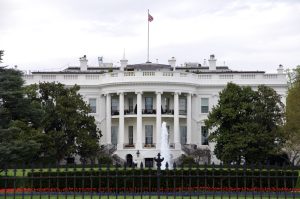The United States made a major move on April 24. When U.S. President Joe Biden signed a military aid bill into law, it provided $95 billion in war aid to U.S. partners – $61 billion to Ukraine, $26 billion to Israel, and $8 billion to Taiwan and other Indo-Pacific countries. Amid clamoring for air defense and a steady Russian advance, Ukraine naturally received the largest allocation. Israel’s share is understandable too, given the ongoing conflict, but the Taiwan money is the real escalation – at least from a Russian perspective.
Western media raced to highlight Russian frustration with the Ukraine aid. The BBC covered Russian mainstream media, while Bloomberg discussed disgruntled official responses. However, for Moscow and its partners in Asia, the United States’ commitment to Taiwan meant much more. The additional weapons to Ukraine pale in comparison to the $278-billion treasure chest already handed over by the West.
The Kremlin thinks the latest round of U.S. aid will give Ukraine limited respite but will not change the larger trend. As Ukraine enacts the most draconian mobilization law in its history, the Russian army is 15 percent larger than it was before the conflict. So, Moscow sees the latest round of supplies as a sign of desperation that will be a tactical inconvenience – but not a strategic danger.
The Israel aid, too, will buttress the country but given the pressure it is under, may not be sufficient for a strategic turnaround. Rather, the extra $26 billion in the current circumstances is a maintenance cost not out of pattern with the cadence of peacetime support at $3.3 billion per year.
Taiwan is the real gamechanger. The $8 billion package – directed at Taiwan as well as other U.S. partners in the Indo-Pacific – will have major effects that will require a concerted effort from Moscow to shore up its interests. The Indo-Pacific region is Russia’s rear and a priority destination for commerce as well as diplomacy. So, it cannot be underestimated.
First, the military aid shows that the West’s full-scale shuttle diplomacy to Beijing is not changing the bottom line of fraying ties. No red carpet was rolled out for U.S. Secretary of State Antony Blinken on his recent visit. Beijing does not have a track record of responding to threats, and despite “stern warnings” China rebuffed Blinken’s warnings not to trade with Russia.
Off-ramps with Beijing are being cut. Before the presidential election in Taiwan, China (and Russia) could hope that the Kuomintang (KMT) would emerge victorious and embark on a rapprochement with Beijing. Instead, the victory of Vice President Lai Ching-te ensured Taiwan will stay the course. Now, emboldened by direct aid, the tightening Japan-U.S. alliance and its focus on the Taiwan Strait, and encouraging statements from the U.K., Taiwan is continuing to de-Sinicze by cutting down statues of former President Chiang Kai-shek as it drifts West.
For Russia, this means Beijing is less likely to bend to Western pressure, given that its critical interests are now threatened with no short-term solution – a consequential effect indeed.
Second, the latest installment of HIMARS and F16s will be oil to the fire of the trend toward regional blocs. The provision of powerful U.S. weapons reasserts strategic commitments, invigorating local allies. In this way, Philippine President Ferdinand Marcos, for instance, feels safe to push China on the South China Sea, tearing up a Duterte era “gentlemen’s agreement.” That marks a significant shift from Marcos’ 2023 words of not wanting to be in a new Cold War.
Third, the importance of the $8 billion really crystallizes when it is considered in context. Amid the tightening of the Five Eyes, a Korea-U.S. shipbuilding entente, speculations about NATO involvement in the region, and the all-important AUKUS Pillar 2 (focusing on hypersonic technology), the latest aid really is an accelerant as it projects force onto China now – and in the hypothetical future.
Regional non-alignment is crucial for Russia. Southeast Asia is a foreign policy priority for tech supply chains and critical as an interlocutor with the West on commodities including oil. Yet, countries will find it tough to stay neutral as militarization takes hold.
The crux of the matter is that pre-April Southeast Asia was a region of competition, loose groupings, and trade. Now, Moscow sees a threat of an unpredictable escalatory spiral with alarming lucidity. An arms and tech race as well as intensifying blocification are unwanted processes for Moscow.
Unsurprisingly, Moscow will see the need to deepen the partnership with China, which is likely to be announced during President Vladimir Putin’s upcoming meeting with Xi. Preliminary statements are already being made by defense officials.
Thus, Russia will have another military theater to think about in its rear, which takes precedence over what Moscow believes to be a manageable situation in Ukraine. Contrary to popular belief, the new U.S. aid package to Ukraine is of less concern than the emerging bloc confrontation to Russia’s east.
































